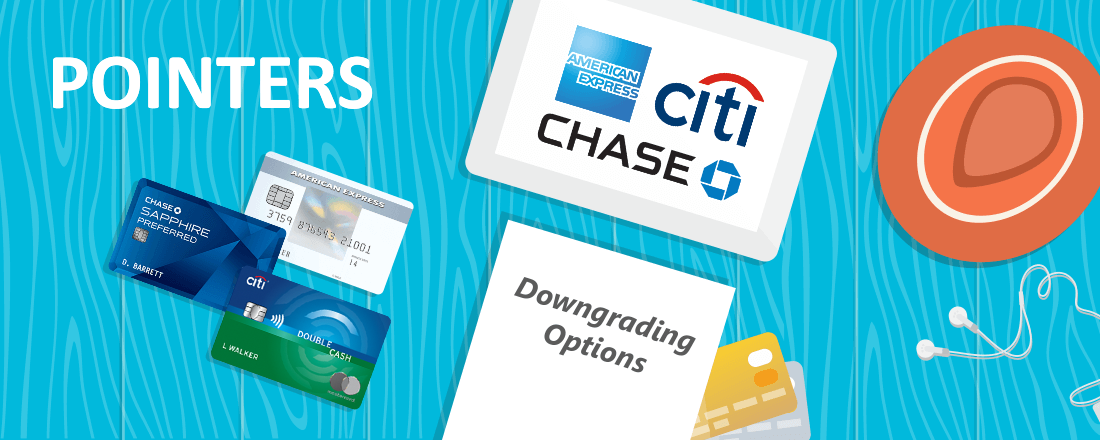
You may have been using a particular credit card for a while, but the time may come when you’re not happy with it anymore. There are potentially many very compelling reasons to get rid of a card, including a reduction of benefits and changes in your own lifestyle and travel habits. Sometimes you simply want to get one that is a better fit for your travel goals. You can check RewardExpert to see if a different card might help you achieve your travel dreams sooner.
For example, if you live in Atlanta, which is the main Delta hub, you would probably be happy with the perks offered by Delta Gold or even Platinum card despite the annual fees. But if you move to New York, where you have a much wider choice of carriers, it might not make sense to you to remain loyal to one airline anymore. Paying that annual fee for a Delta card may not seem like a good idea any longer.
Why Not Just Close the Card
When you feel that your credit card doesn’t fit your needs, your first impulse might be to get rid of it. But you need to be careful. Closing a credit card can have an impact on your credit score. When you close down a line of credit, your debt-to-credit ratio, also known as your utilization rate, may change and lower your score. This is not a good thing, as it’s a vital component of the FICO score. Many credit experts recommend to keep it under 30%.
Another reason might be that downgrading your card can open the way to some other benefits and preserve the
American Express Downgrading Options
Here you can find the most important requirements of how to downgrade amex credit cards. Downgrading American Express cards may be rewarding, but it’s tricky for two reasons. First, you can’t downgrade a charge card to a credit card or vice-versa. Second, the representatives often give you different answers depending on who you speak to.
Do make sure to advise the agent that you don’t want to fill out a new application and get a hard inquiry. That defeats the purpose of downgrading your credit card in the first place. If the agent tells you there is only one or two options available, and neither appeals to you, just thank her and call again. You might get luckier with another agent.
If you don’t have specific preferences, the Amex Everyday Credit Card is a
You can use these points to transfer them not only to Delta, but over a dozen of other Amex Membership Rewards partner airlines. If you want to downgrade to Amex Everyday, make sure to mention that card specifically to the agent.
There is no way to downgrade an Amex charge card to a credit card, which is unfortunate because it would resolve the issue of losing Membership Rewards points. The problem is that when you close an Amex Membership Rewards card you shouldn’t have any points in your account. So unless you have used them to buy something or transferred them to an Amex partner’s program, they will be forfeited if you close the card.
You might find yourself with a bunch of points when you want to close and you’re not ready to commit to transferring them. This is when the EveryDay card would work nicely, as it’s the only no-annual-fee card from the Membership Rewards family that allows you to transfer the points freely.
One of the cheapest options to downgrade the Amex Platinum or Gold Rewards card would be to Amex Green which carries a $95 annual fee, but aside from preserving the points, it’s not a good choice because Amex Green is one of the weakest Amex cards in terms of
In order to avoid carrying a card with an annual fee that you don’t need, you could apply for the EveryDay card before canceling your expensive Amex charge card and transfer your points to the EveryDay card. That’s not exactly downgrading, as there will be a hard inquiry on your credit report, but it’s the only sensible thing to do.
Chase Downgrading Options
Here you can find the most important requirements of how to downgrade Chase credit cards. In the issue of “product-changing” or downgrading a card, Chase also has very specific rules.
You can’t change or downgrade a Chase card to a co-branded card and vice versa, and you can’t change or downgrade co-branded cards to other co-branded cards from a different family. For example, if you want to change a United card to a Marriott card, Chase won’t let it happen.
Due to these limitations, you can find the best downgrading values with cards from the Chase Ultimate Rewards family. For example, you could downgrade the Chase Sapphire Preferred card ($95 annual fee) to the no-fee Freedom Card. This way, not only would you preserve your UR points (although you won’t be able to transfer them), but also get another great card with quarterly 5 percent bonus earning options.
Downgrading Chase Business Cards
If you need to downgrade the Ink Business Preferred card, you could downgrade it to the Ink Cash card, which is a great no-fee business card that still allows you to
Citi Downgrading Options
Citi doesn’t have any firm rules in place, except that the change is only allowed after you have an account for at least a year. That means that you can downgrade any card to any other Citi card. If your annual-fee card doesn’t fit your needs anymore, there are three no-fee credit cards that you might want to consider.
Here are the Best No Annual Fee Citi Credit Cards Worth Downgrading to:
With it’s easy 1 point per $1 spent and 1 point when you pay your balance, the Citi Double Cash® Card has been a popular,
The Citi Preferred Card (no longer available) is a Citi ThankYou card that you might want to choose if you value Citi ThankYou points more than cash. This card is great for foodie-types and will earn you 2x points on dining out and entertainment purchases, and 1x on all other purchases.

